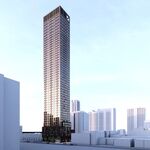Disparishun
Active Member
Always remember that the end point of a subway line should never have anywhere near the demand that would fill the line to capacity. Otherwise, the line is useless when you get further along because nobody can get on. This is the problem that we're approaching with the Yonge line.
That makes almost no sense. How should demand near the theoretical end point of a subway line be addressed, then? Shall we ignore it? Close our eyes and hope it goes away? Encourage them to drive instead? Move employers and other trip generators towards the end points in a flurry of demand side management?
Perhaps a better thing to remember is that, where a subway line is almost full to capacity, the origins and destinations that that subway line ostensibly serves are not, in fact, adequately served -- more transit infrastructure is needed to serve the midpoints.
Which does not, of course, remove the requirement to address demand at the end points.
(Shorter version: time to LRT-ize the RH GO line.)
Last edited:




